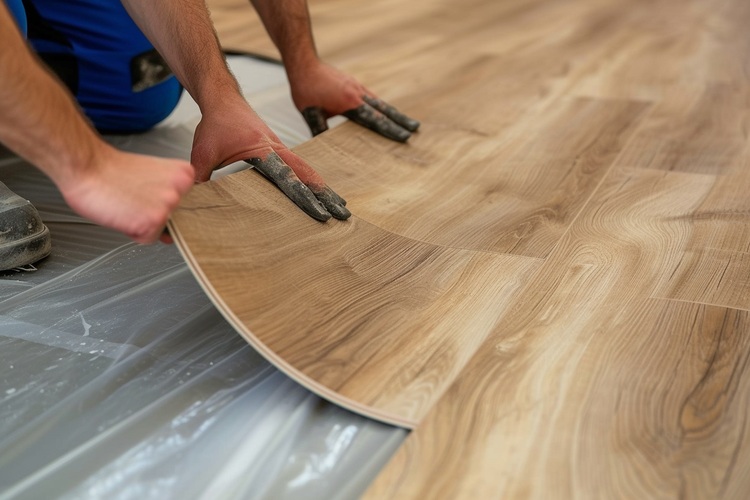A Complete Guide to Flooring Installation for Homeowners
Flooring installation is a significant home improvement project that can dramatically transform the look, feel, and functionality of your living spaces. While professional installation is often recommended for complex projects, having a thorough understanding of the process can help you make informed decisions, communicate effectively with contractors, or even tackle certain installations yourself. This guide will walk you through the essential aspects of flooring installation, from initial planning to long-term maintenance.

A Complete Guide to Flooring Installation for Homeowners
Choosing and installing new flooring represents one of the most impactful home improvement projects you can undertake. The right flooring enhances your living space’s comfort, aesthetics, and value while providing years of reliable service. Success depends on making informed decisions about materials, following proper installation procedures, and understanding long-term maintenance requirements.
Understanding Different Flooring Materials
Each flooring type offers distinct advantages and installation requirements. Hardwood provides timeless elegance and durability but requires careful moisture control and specific subflooring conditions. Laminate flooring offers wood-like appearance with easier installation and lower maintenance needs. Tile flooring excels in moisture-prone areas like bathrooms and kitchens, requiring precise leveling and waterproofing. Carpet provides comfort and insulation but needs proper padding and stretching techniques. Vinyl flooring combines durability with water resistance, making it suitable for various room types. Understanding these characteristics helps you select materials that match your lifestyle, budget, and installation capabilities.
Preparation and Planning for Installation
Proper preparation determines installation success and longevity. Begin by accurately measuring your space, adding 10% extra material for waste and future repairs. Assess your subfloor condition, ensuring it’s level, clean, and structurally sound. Most flooring requires subfloor variations of less than 3/16 inch over 10 feet. Remove existing flooring completely, checking for moisture issues or damage that needs addressing. Plan your installation pattern and starting point, typically beginning in the most visible area or longest wall. Gather necessary tools including spacers, underlayment, transition strips, and appropriate adhesives or fasteners. Allow materials to acclimate in your home for 48-72 hours before installation.
Essential Installation Techniques
Installation methods vary significantly between flooring types. Floating floors like laminate and some vinyl use click-lock systems that don’t attach to the subfloor, requiring careful attention to expansion gaps. Nail-down hardwood installation demands proper spacing, appropriate nail angles, and consistent fastening patterns. Tile installation involves spreading adhesive evenly, maintaining consistent spacing with tile spacers, and ensuring proper alignment. Carpet installation requires stretching across tack strips and creating smooth, wrinkle-free surfaces. Regardless of material, maintain manufacturer-recommended expansion gaps around room perimeters and obstacles. Use appropriate underlayment when specified, as it provides moisture protection, sound dampening, and surface smoothing.
Addressing Common Installation Challenges
Even experienced installers encounter obstacles during flooring projects. Uneven subfloors require leveling compound or shimming to create proper surfaces. Moisture issues need addressing through vapor barriers or dehumidification before installation proceeds. Irregular room shapes demand careful measuring and custom cutting around obstacles like cabinets, doorways, and heating vents. Squeaky floors often result from loose subflooring that needs additional fastening. Color or pattern variations in natural materials require careful selection and arrangement for pleasing appearance. Temperature and humidity fluctuations can cause expansion and contraction issues, making proper acclimation and gap allowances crucial. Plan for these challenges by having appropriate tools and materials readily available.
| Service Type | Provider | Cost Estimation |
|---|---|---|
| Hardwood Installation | Local contractors | $8-15 per sq ft |
| Laminate Installation | Home improvement stores | $3-8 per sq ft |
| Tile Installation | Specialized tile contractors | $10-20 per sq ft |
| Carpet Installation | Carpet retailers | $2-6 per sq ft |
| Vinyl Installation | General flooring contractors | $4-12 per sq ft |
Prices, rates, or cost estimates mentioned in this article are based on the latest available information but may change over time. Independent research is advised before making financial decisions.
Maintenance and Care for Longevity
Proper maintenance extends flooring life and preserves its appearance. Hardwood floors benefit from regular sweeping, occasional deep cleaning with wood-specific products, and periodic refinishing every 7-10 years. Laminate requires gentle cleaning with damp mops and immediate spill cleanup to prevent moisture damage. Tile maintenance involves regular grout cleaning and periodic sealing to maintain water resistance. Carpet needs frequent vacuuming, professional cleaning every 12-18 months, and prompt stain treatment. Vinyl flooring requires simple sweeping and mopping with mild cleaners. Establish entry mats to reduce dirt and debris, maintain consistent indoor humidity levels, and address damage promptly to prevent spreading. Regular inspection helps identify issues before they become major problems.
Successful flooring installation combines careful material selection, thorough preparation, proper technique execution, and ongoing maintenance commitment. Whether tackling the project yourself or hiring professionals, understanding these fundamentals ensures satisfactory results that enhance your home’s comfort and value for years to come.




